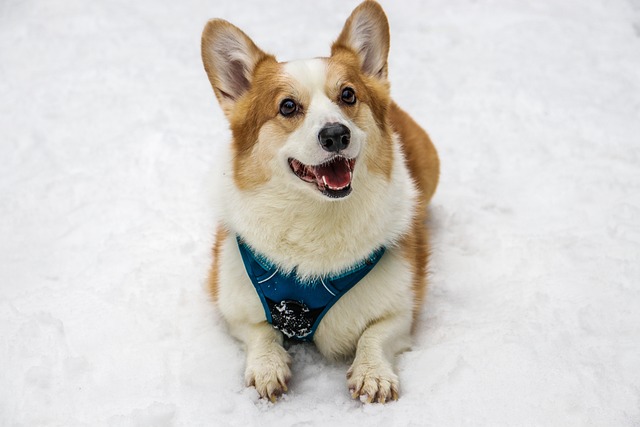
What is glaucoma in a dog?
You might notice your dog squinting more at mealtime or avoiding bright sunlight—these small changes could be early signs of a serious eye condition.
Canine Parvovirus (CPV) is a highly contagious viral disease that primarily affects dogs, especially puppies and unvaccinated adult dogs. This virus is known for its strong infectivity and high mortality rate, causing great pain and challenges to many dogs and their owners. Understanding the incubation period of canine parvovirus is crucial for prevention, early detection, and treatment of this disease.
The incubation period of canine parvovirus is like a ghost hidden in the folds of time. This highly infectious disease caused by canine parvovirus type 2 (CPV-2) typically has an incubation period of 3-7 days. However, in clinical practice, I have seen puppies develop symptoms within the shortest 24 hours and have also encountered special cases with an incubation period of up to 14 days. At the moment the virus invades host cells, it begins a precise replication plan: first, it establishes primary infection foci in intestinal lymph nodes, and then spreads throughout the body through blood circulation, focusing on attacking rapidly dividing cells - intestinal epithelial cells, myocardial cells, and bone marrow cells.
The immune system of a puppy is like an unfinished defense structure. I once conducted an autopsy on a 45 day old poodle and found that its myocardial tissue was covered in white stripes, which is a typical feature of myocarditis type parvovirus. These types of cases often have no warning during the incubation period until the virus suddenly delivers a fatal blow. For enterovirus, the symptoms during the incubation period are more like carefully designed scams: sick dogs may show temporary loss of appetite, soft stools, and even occasional vomiting, which can easily be interpreted as "discomfort during food exchange" or "catching a cold".
During the incubation period, dogs may appear completely healthy, but the virus has quietly spread within their bodies. The virus mainly attacks the intestinal epithelial cells and immune system of dogs, leading to severe gastrointestinal symptoms and immune suppression. After the incubation period ends, dogs will begin to show clinical symptoms, which usually include severe vomiting, diarrhea (usually bloody), loss of appetite Lethargy and fever. Due to the virus breaking down the intestinal barrier, dogs may rapidly dehydrate and experience serious complications such as electrolyte imbalance and sepsis.

For puppies and unvaccinated adult dogs, canine parvovirus infection is particularly dangerous. The immune system of puppies is not fully developed, and if adult dogs are not vaccinated, they may also be unable to effectively resist the virus due to insufficient immunity. Therefore, these dogs are more likely to develop severe illness or even death after infection. According to statistical data, the mortality rate of untreated canine parvovirus infection can reach up to 90%, while even with active treatment, the mortality rate remains between 10% and 30%.
In the process of preventing and treating canine parvovirus, we are not only protecting the health of dogs, but also safeguarding the emotional bond between them and us. Dogs are a part of our lives, and their happiness and health directly affect our sense of happiness. When we see them suffering from illness, our hearts also tighten. Therefore, understanding the incubation period, symptoms, and preventive measures of canine parvovirus is not only responsible for dogs, but also for ourselves.
Although the incubation period of canine parvovirus is short, its impact is profound. During this period, viruses silently erode the health of dogs, and as owners, we need to build a protective wall for them with keen observation and quick action. Through vaccination, environmental cleanliness, and daily observation, we can minimize the risk of dogs contracting the virus to the greatest extent possible. Even if unfortunately infected, timely medical intervention and careful care can help them overcome the disease and regain vitality.
During this process, the emotional connection between us and the dog will become even deeper. Every touch, every gentle word, and every moment of companionship are expressions of our love for them. Dogs may not be able to express their gratitude in words, but they will respond to our love with their eyes, actions, and loyalty. This silent communication is the most precious emotional bond between us and dogs.
The incubation period of canine parvovirus reminds us that health problems often occur silently. As owners, we need to remain vigilant at all times and use our knowledge and actions to safeguard the health of our dogs. At the same time, we also need to empathize with their emotional needs and use love to soothe their fears and pains. Only in this way can we truly become their strongest support, allowing them to spend every healthy and happy time with us.

You might notice your dog squinting more at mealtime or avoiding bright sunlight—these small changes could be early signs of a serious eye condition.

Let’s set the scene: It’s a sweltering Phoenix afternoon—105°F outside—and you rushed your 2-year-old Lab mix, Cooper, on a quick walk to “get it over with.”

Let’s get real: You’re in your Miami apartment, watching your 3-year-old Corgi, Loki, struggle to climb the stairs to your second-floor unit.

Many dog owners brush off occasional scratching as just “dog behavior,” but persistent itching often signals something more—like a food allergy.

You might first notice your dog scratching more than usual—chewing at their paws until the fur looks thin, or rubbing their face against the couch nonstop.

Let’s be real: You’re standing in your Chicago apartment, watching your 3-year-old Beagle, Max, huff and puff just to climb onto the couch.